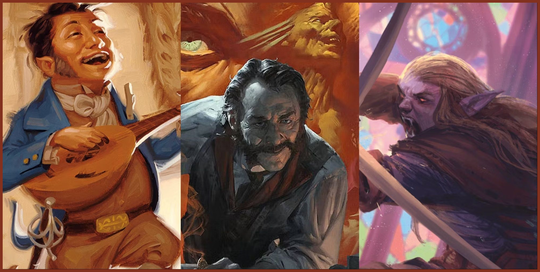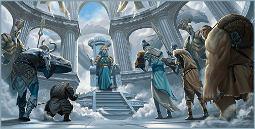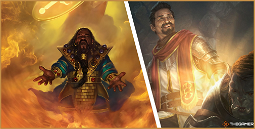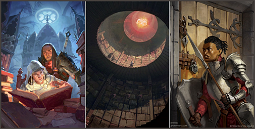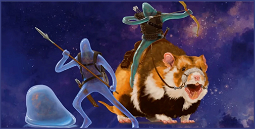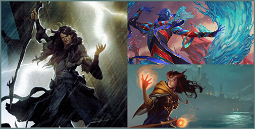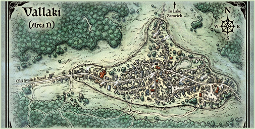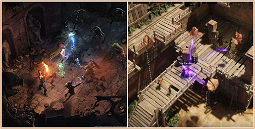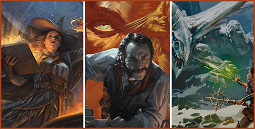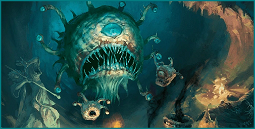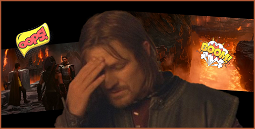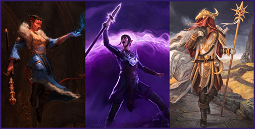Describing a scene in Dungeons & Dragons
As Dungeon Master, it falls to you to set the scene and describe what your players are experiencing. But with so much to describe and so much to remember, it’s easy to fall back on the basics – a tavern is a tavern, a forest is a forest, and a dragon is a big lizard with wings. But that’s not good enough! With the right approach, you can provide so much more detail to your players, and in turn, help them to feel like they’re really there. Here are some tips to get you started.
Describing materials, damage, and odd details
Part of describing a scene is describing what’s in it, and in the case of a tavern brawl, that means a lot. Describe the sounds of breaking glass and smashing furniture, the smell of spilled ale and sweat, and the sight of blood on the walls and tables. Not only will this make the scene more real for your players, but it will also provide opportunities to add in details that may have consequences – a table is lying on its side, obscuring a door, or a line of blood leads away from a body.
Describing creatures and their actions
Encounter descriptions should go beyond ‘a goblin’ or ‘a dragon’ to give your players a better idea of what’s going on. Describe how the goblins are fighting with reckless abandon, attacking with broom handles and chairs, while the dragon circles overhead, blasting the ground with fire. Describe how the goblin leader is barking orders to his lackeys, while the dragon’s scales glisten in the sunlight.
Utilize all senses to make your descriptions more immersive and informative. Describe the smell of smoke and burning wood, the sounds of screams and clashing weapons, and the feel of broken glass beneath your boots.
Connecting descriptions to dice rolls
When you roll a dice in D&D, you have a lot of information to work with. The dice roll itself is a piece of story – a success or a failure – and it can also be used to describe a failure or failure in actions. Too often Dungeon Masters describe the outcome of a dice roll without connecting it to the action that preceded it. This leads to a disconnect between the action taken and the outcome. Instead of “Marcus attacks the guard, but misses”, describe what Marcus is trying to do and the outcome of the action – “Marcus swings wildly, missing the guard’s head by inches.”
Giving better descriptions of failures and failures in actions
As Dungeon Master, it’s also your job to describe what’s happening when things go wrong. This could be describing a failed lock pick, a bad jump off a roof, or a missed attack. Too often, Dungeon Masters describe what’s happening immediately before the dice roll, and then skip over the outcome. This can make it feel like there’s no consequence to actions and that the dice roll is the only deciding factor.
Instead, describe the action and its outcome. Describe the lock, the jump, or the attack. Then, let the dice roll represent the consequences of that action. For example, “Marcus picks the lock, but the guard hears the tumblers click and comes running.”
Adding action and purpose to NPCs
The more you describe NPCs, the more realistic and interesting they’ll feel. Rather than describing an NPC as “a goblin guard”, describe what they’re doing and why. Is the goblin guard patrolling the alleyways? Is he standing watch outside a treasure chest? Is he sleeping with his spear propped up beside him?
It’s also worth adding some minor actions for minor NPCs. In a tavern brawl, for example, every NPC should have a purpose, even if it’s just attacking the nearest target. Using minor actions for minor NPCs can add a lot of flavor and flair to your game. Rather than describing one goblin as “a goblin”, describe him as “a goblin with a tooth missing” or “a goblin with a scar across his face”.
Add references to friends or pop culture
People interact with each other all the time, and as Dungeon Master, it’s your job to make these interactions as realistic as possible. The way to do this is to inject meaning and relevance into your descriptions. If Marcus is talking to a guard, reference a common friend or acquaintance. If the party is conversing with the barkeep, reference a favorite bar or location. If a bandit is threatening the party, remind them of the time they robbed a caravan together.
Draw inspiration from books
Books are a treasure trove of descriptive language and descriptions of scenes. When you’re struggling to find the right words for a scene, refer to books for inspiration. Look for phrases that you can lift and apply to your own descriptions. If you’re describing a big, open cave, for example, you might say, “The cave is so big, you can’t see the other side.” This is a perfect example of descriptive language that you can find in countless books and movies.
Let players describe actions and outcomes
Part of being a Dungeon Master is sharing the responsibility of storytelling. One way to share this burden is to let players describe how they open doors, or how they deliver finishing blows to monsters. This gives players a voice within the game and also helps players feel more invested in the story.
Another way to share the storytelling burden is to let players describe how they spend their ability and skill points. Rather than just telling your players how their character has improved, ask them how they want to spend their points.
